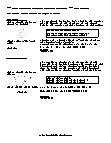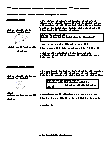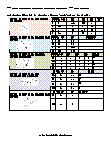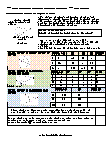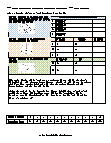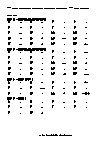Chords, Secants, and Tangents in Circles Worksheets
What Are Chords, Secants, and Tangents in Circles? A circle is one of the commonly found and often observed geometrical figures. It is a two-dimensional figure and is usually defined as the shape that has all the points present equidistant from the center of the circle. Some real-world examples include a wheel, coin, and round bottle caps. To measure the distance between any point on the circumference of the circle and the center, we draw radius. Radius is also half the length of a diameter. Diameter is the line passing through the center and drawn across the circle. Besides radius and diameter, the circle has some parts too. A chord is a line that connects the two points on the circumference of the circle. Let's understand this with a real-life example. Suppose you are standing at one side of the circular pond and gazing at the picnic tables on the other side of the pond. The chord is the line starting from you (point A) to the picnic tables on the other side (point B). Typically, there are two types of segments drawn across the circle. A segment that intersects the edge of the circle twice is known as the secant. And a segment that touches the edge of the circle is known as the tangent.
-
Basic Lesson
Guides students through using chords and secants. If two chords intersect in a circle, the product of the lengths of the segments of one chord equals the product of the segments of the other.
View worksheet -
Intermediate Lesson
Demonstrates the concept of the Secant-Tangent Rule and Intersecting Chords Rule. If a secant segment and tangent segment are drawn to a circle from the same external point, the product of the length of the secant segment and its external part equals the square of the length of the tangent segment.
View worksheet -
Independent Practice 1
A really great activity for allowing students to understand the concepts of the Chords, Secants, and Tangents in Circles.
View worksheet -
Independent Practice 2
Students use Chords, Secants, and Tangents in Circles in 20 assorted problems. The answers can be found below.
View worksheet -
Homework Worksheet
Students are provided with 12 problems to achieve the concepts of Chords, Secants, and Tangents in Circles.
View worksheet -
Skill Quiz
This tests the students ability to understand Chords, Secants, and Tangents in Circles.
View worksheet
Dumb Question?
Question: What do you call an angle more than 90 degrees
and less than 180 degrees?
Answer: Obtuse.
